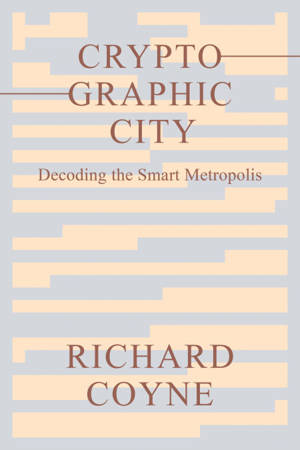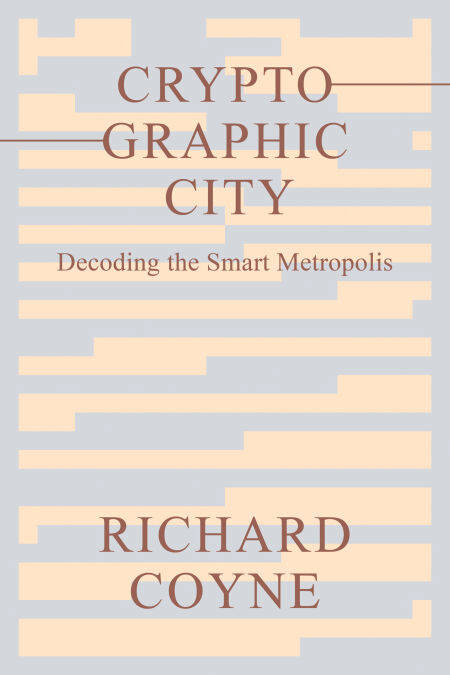
- Afhalen na 1 uur in een winkel met voorraad
- Gratis thuislevering in België vanaf € 30
- Ruim aanbod met 7 miljoen producten
- Afhalen na 1 uur in een winkel met voorraad
- Gratis thuislevering in België vanaf € 30
- Ruim aanbod met 7 miljoen producten
Zoeken
€ 39,42
+ 39 punten
Omschrijving
Cryptography’s essential role in the functioning of the city, viewed against the backdrop of modern digital life.
Cryptography is not new to the city; in fact, it is essential to its functioning. For as long as cities have existed, communications have circulated, often in full sight, but with their messages hidden. In Cryptographic City, Richard Coyne explains how cryptography runs deep within the structure of the city. He shows the extent to which cities are built on secrets, their foundations now reinforced by digital encryption and cryptocurrency platforms. He also uses cryptography as a lens through which to inspect smart cities and what they deliver. Coyne sets his investigation into the cryptographic city against the backdrop of the technologies, claims, and challenges of the smart city.
Cryptography provides the means by which communications within and between citizens and devices are kept secure. Coyne shows how all of the smart city innovations—from smart toasters to public transportation networks—are enabled by secure financial transactions, data flows, media streaming, and communications made possible by encryption. Without encryption, he says, communications between people and digital devices would be exposed for anyone to see, hack, and misdirect. He explains the relevant technicalities of cryptography and describes the practical difference it makes to frame cities as cryptographic. Interwoven throughout the book are autobiographical anecdotes, insights from Coyne’s teaching practice, and historical reports, making it accessible to the general reader.
Cryptography is not new to the city; in fact, it is essential to its functioning. For as long as cities have existed, communications have circulated, often in full sight, but with their messages hidden. In Cryptographic City, Richard Coyne explains how cryptography runs deep within the structure of the city. He shows the extent to which cities are built on secrets, their foundations now reinforced by digital encryption and cryptocurrency platforms. He also uses cryptography as a lens through which to inspect smart cities and what they deliver. Coyne sets his investigation into the cryptographic city against the backdrop of the technologies, claims, and challenges of the smart city.
Cryptography provides the means by which communications within and between citizens and devices are kept secure. Coyne shows how all of the smart city innovations—from smart toasters to public transportation networks—are enabled by secure financial transactions, data flows, media streaming, and communications made possible by encryption. Without encryption, he says, communications between people and digital devices would be exposed for anyone to see, hack, and misdirect. He explains the relevant technicalities of cryptography and describes the practical difference it makes to frame cities as cryptographic. Interwoven throughout the book are autobiographical anecdotes, insights from Coyne’s teaching practice, and historical reports, making it accessible to the general reader.
Specificaties
Betrokkenen
- Auteur(s):
- Uitgeverij:
Inhoud
- Aantal bladzijden:
- 336
- Taal:
- Engels
Eigenschappen
- Productcode (EAN):
- 9780262374828
- Verschijningsdatum:
- 15/05/2023
- Uitvoering:
- E-book
- Beveiligd met:
- Adobe DRM
- Formaat:
- ePub

Alleen bij Standaard Boekhandel
+ 39 punten op je klantenkaart van Standaard Boekhandel
Beoordelingen
We publiceren alleen reviews die voldoen aan de voorwaarden voor reviews. Bekijk onze voorwaarden voor reviews.








